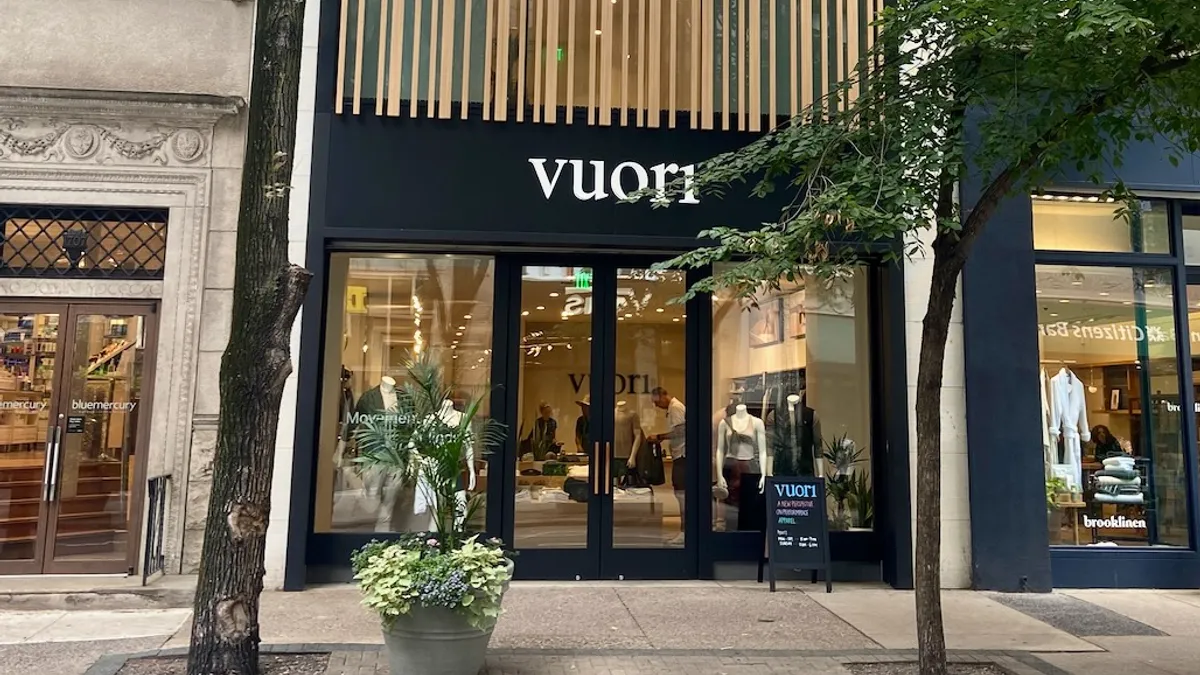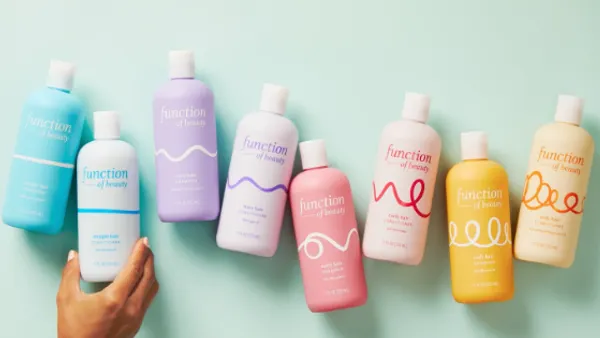When Vuori raised $400 million in 2021, it raised eyebrows. Then, founder and CEO Joe Kudla said the brand didn’t really need the money, but was using it to reward early investors.
Now, with a new $825 million investment from General Atlantic and Stripes that more than doubles its last raise and gives the brand a $5.5 billion valuation, Vuori still doesn’t need the money.
“This was also to provide liquidity opportunities for early investors as well,” Jon Kossow, a managing partner at Vuori’s first institutional investor, Norwest, said. “The business is operating profitably. It doesn't need funds for operating cash or for investment. And so this too was an opportunity for earlier stage investors — angels, high net worth folks — to get partial liquidity.”
Vuori declined an interview request with Kudla and did not respond to questions about what it plans to use its new funds for or what its future growth plans are. But Matt Powell, senior adviser with BCE Consulting, said raising money to reward investors isn’t that unusual for a later-stage company, since early investors likely want to cash their money out — and new, long-term growth investors want to get in.
“There's no financial engineering here.”

Jon Kossow
Managing Partner at Norwest
Norwest is still Vuori’s largest institutional shareholder. The company calls its initial investment in Vuori a contrarian one, but even when Norwest invested $45 million in the brand in August 2019, Vuori was already touting its profitability. Kudla told Retail Dive a few years ago that Vuori has been profitable since 2017, just two years after its launch.
“It's truly remarkable that they've been profitable almost from the beginning because most companies just simply can't be — the startup costs are huge, the product development costs are huge,” Powell said. “Typically, brands lose money in the early years as they're building out, until they reach a tipping point and then turn profitable. So it's a real tribute to what they've done.”
Kossow, who is an active board member at Vuori, confirmed that the brand is still profitable on both an EBITDA and net income basis.
“It's profitable the old fashioned way,” Kossow said. “There's no financial engineering here.”
That’s thanks to an emphasis on growing at a sustainable rate, with leadership approaching both international and domestic expansion methodically (Vuori has had a long-term plan since 2021 to open 100 stores by 2026) and keeping a tight hold on wholesale along the way.
Being available in multiple channels “makes customer acquisition more economical,” Kossow said, but controlling wholesale orders is critical to more sustainable growth. “A lot of brands, the challenge and the pitfall they run into is growing at all costs — and that's usually through the wholesale channel. We've taken a very different approach. The wholesale channel always wants more and we kind of keep it in a measured growth fashion to protect the brand and sustainable growth focus.”
Vuori’s profitability and continued growth rates are a big part of what has drawn investors in, Kossow noted, saying the brand has been “pursued by a number of investors” since the 2021 deal with SoftBank thanks to its strong financials. Kossow could not provide specifics on Vuori’s performance, but said it’s seen consistent, high growth rates over the years.
“It's a self-sustaining company that hasn't needed capital to continue on the clip it's on, so I think that's attractive for folks as well,” Kossow said. “It's a big market. I think people can clearly look at brands like Lululemon and how big they’ve become and understand that there's no reason why Vuori can't be as big, if not bigger.”
The success of a multitude of brands in the activewear space — from Lululemon, Alo Yoga and Vuori to footwear companies like Hoka and On — points to a larger trend that has positioned performance-inspired apparel as fashion, according to Powell. The athleisure movement has been on the rise for years, but now even items like tennis skirts and running shoes are being treated as everyday wear, Powell said, which creates opportunities for ambitious brands to rise.
An Earnest Analytics report from earlier this year pointed to the success of both Alo Yoga and Vuori in gaining share with shoppers, a trend that has also held true with teens.
“There's a tremendous amount of junk in this market and a tremendous amount of noise — brands that don't even know how to make activewear making activewear,” Powell said. “So I think there probably is a ceiling [for Vuori]. But I think Lulu was a good example of the fact that it turned out to be a multibillion dollar brand, even in what's a very, very crowded market.”
And much like Lululemon, which has expanded far beyond traditional activewear to offer products more akin to work pants and polo shirts, Kossow sees Vuori’s potential to bring the customer into a variety of new product categories. The loyalty that comes from one good product can lead shoppers to be more willing to try whatever Vuori comes out with next, like button-down dress shirts or new outerwear products, Kossow noted.
Vuori’s website already highlights a variety of activities, like running and tennis, as well as a “travel” category that features more everyday styles.
As to the future, Kossow wouldn’t say whether the company was considering an IPO, but noted that “exit opportunities present themselves” to brands that build a strong business.
“I would say the future looks quite good for them,” Powell said. “I'm never really good on valuations — they always seem too much money to me, but again, I think the future for the brand looks really bright.”





















